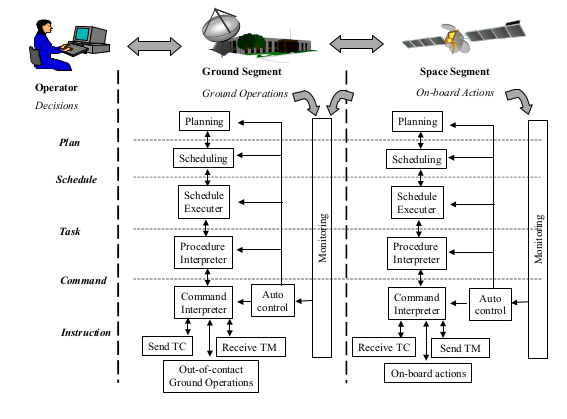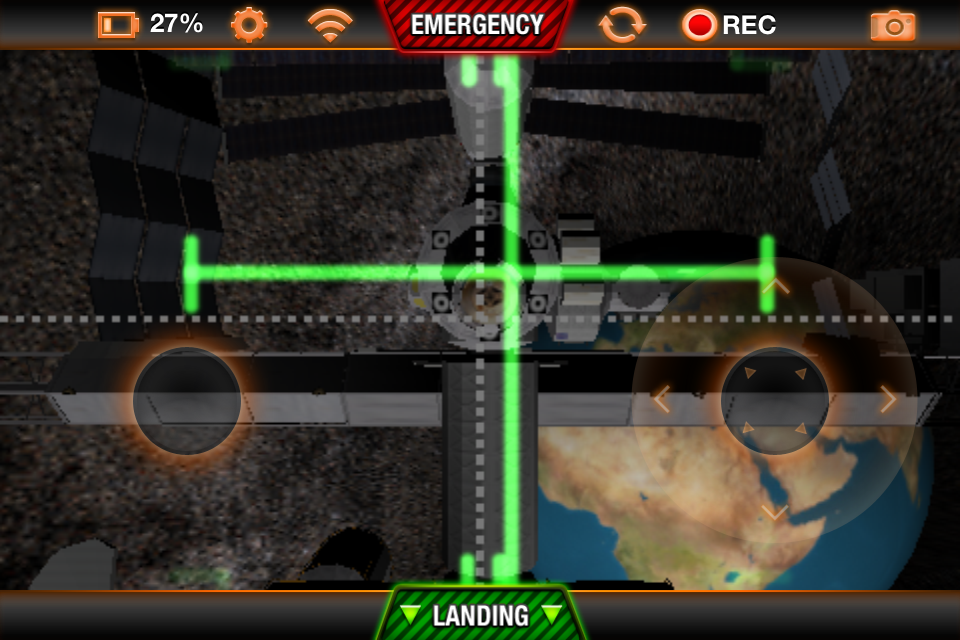Understanding Space Traffic Management and the Key Players in the Space Tech Market
Space is filled with debris and regular launch of satellites and other objects into space has resulted in the need of a better space traffic management. According to the European Space Agency’s Space Debris Office, there are over 4700 functional satellites in space out of 12000 that have been launched since the beginning of the Space Age in 1957. 7500 satellites are still in space in various operational phases, adding to the clutter in space. Space traffic management is an important aspect in maintaining a clutter-free zone for new launches even as we see the emergence of new regulatory frameworks for outer space traffic management. In this article, we will highlight the definition of space traffic management, key trends in this industry and the important players who contribute the most to this domain.
What is Space Traffic Management?
Space traffic management or STM is a global compliance management strategy associated with contemporary space law and policy governing national, international, and private constellations of large and small-sized satellites at various stages of leaving and re-entry of satellite or space vehicles. STM is required to be defined as per the guideline of Space Domain Awareness. According to this resource, Space Traffic Management is defined as “the ability of international and national authorities to track spacecraft and space debris, to regulate where space operators position their spacecraft, and to oversee debris mitigation and remediation efforts.”
By principle, STM frameworks cover for both man-made and unmanned space exploration missions.
Launch of any satellite and subsequent re-entry could cause accumulation of satellite hardware, fuselage, and other kinds of solid and semi-solid debris in space. Unattended debris could fall onto Earth and cause damage to properties and lives.
According to NASA, the STM system is based on the use of standardized APIs. APIs allow easier interconnection and conceptual definition of roles to more easily allow suppliers with different capabilities to add value to the ecosystem.
So, in general, we call called STM as a combination of space traffic and debris retrieval management. This is the most contemporary version, as provided by the “space object catalog” or Satellite Catalog (SATCAT). It is maintained by Joint Combined Space Operations Center (CSpOC) at Vandenberg Air Force Base, part of U.S. Strategic Command. The White House’s Office of Science and Technology Policy (OSTP) often provides insights on the future of space traffic management to incentivize de-orbiting missions and in-orbit satellite services.
The IAA Cosmic Study on Space Traffic Management (2006) defined STM as ”the set of technical and regulatory provisions for promoting safe access into outer space, operations in outer space and return from outer space to Earth free from physical or radio-frequency interference”.
The origin of STM policies could be traced back to at least 15-20 years before the first space mission was ever carried out. But, this only picked pace in the Cold War era, provoking the need to regulate earth-based space projects before they could fill up the whole sky with man-made debris and constellations. Globally, STM is planned and executed by major space research organizations such as The United States Air Force, NASA, and the European Space Agency, ISRO from India and China National Space Administration. Their common goal is to ensure a safe passage to every satellite that is required to be placed in the orbit and subsequent retrieval of debris in every space mission carried out in the future.
The common objectives of the Space Traffic Management systems can be listed as follows:
1) Establish automated software-based intelligent controllers for Autonomous Collision Avoidance maneuvers
2) Conduct thorough and timely study of the space debris and how these influence satellite launch protocols
3) Understand the effect of orbital perturbations
4) Design a space management roadmap for the assessment of resiliency, risk and optimization of the advanced STM systems; certifiable control for STM
5) Licensing and compliance of STM software companies
With around 4500 functional satellites already in the space orbiting the Earth, and another 25000 more units likely to be placed by 2030, the volume of space debris will only grow in size and space. Not only are these high-risk projectiles that could permanently damage the satellites, these could also fall onto Earth’s surface proving hazardous for everyone living on this planet.
According to the Aerospace’s Debris Analysis Response Team, here are the real-time debris risk assessment for on-orbit collisions and breakups.

Major Space Traffic Management (STM) programs could include other aspects of aerospace exploration as well.
These are:
- Space Security/ Space Surveillance and Tracking (SST)
- Space Weather (SWE)
- Near-Earth Objects (NEO)
Why we Need STM?
To safeguard the future of space exploration, we require a very strong compliance-backed STM policy. These would ensure that every country has an equal opportunity to place their satellites. For countries that are lagging in space exploration or satellite launches needn’t worry about Star Wars-kind of a situation where debris from satellites of one nation (including from those belonging to hostile nations) affect the life and environment of another nation. STM guarantees this risk-free environment to all nations who sign up for the program.
Another reason to sign up for an STM program is to boost satellite-based communication. Companies like SpaceX’s Starlink project is already deploying satellites to meet the needs of various countries such as Qatar and India. As satellite-based communication and navigation becomes more mainstream, we would require more stringent laws to govern STM.
Technologies Driving the STM Capabilities
Artificial intelligence (A), IT Automation, Augmented Reality, Robotics, Super computing, cybersecurity and Cloud-based navigation technologies are at the forefront of Space Traffic Management capabilities. AI, in particular, is driving the whole STM market toward a new direction. Startups like Neuraspace are using AI to build a machine learning-based model to automatically detect patterns from complex data. These ML models then learn how the data is related in space traffic management and automatically provide better predictions for risk mitigation in real-time flights.
AI and automation capabilities are not just limited to STM programs designed by private companies. The European Space Agency has launched its own AI-based automated maneuver decision-making on board future ESA spacecrafts and OPS- SAT missions.

A key AI program that is building the future of space traffic management- ICE LAB could completely change the way data science is used in space exploration and debris management. The ICE LAB stands for the International Computational Engineering Laboratory. ICE LAB is developing a massive AI-based decision support system to assist ground operators to plan and implement collision avoidance maneuvers. In addition to STM applications, AI-based decision making systems for collision avoidance maneuvers could also be used in space situational awareness (SSA). Lockheed Martin’s iSpace is a great example in how battle management capabilities could be used in space traffic management programs.
To understand how space situation awareness works, watch this short video:

Deutsches Zentrum für Luft- und Raumfahrt; or DLR (German Aerospace Center) is a leading AI innovator in the aerospace industry. It has been carrying out massive research and simulated experiments to assist STM projects for space security. It build AI and NLP platforms for various space technologies such as Earth Observation, Space Craft operations, flight analysis, deep space network communications, robotics, predictive maintenance, condition monitoring, and so on. NASA’s AI for aerospace applications is also worth a mention in this growing list of STM systems. It has convened the Artificial Intelligence Group for various space missions and analytics.
Key Private Players in the STM Industry
We have listed the top players who are working in the STM space.
Airbus Group
Airbus is one of the world’s largest aeronautics and space technology companies.
Currently, Airbus offers wide range of solutions and services to space exploration companies and organizations through the TEXUS/MAXUS Sounding Rocket Program.
BAE Systems
BAE is one of the largest equipment suppliers to the US military.However, BAE’s space technology program is equally impressive. Currently, the company designs advanced avionics and sensor systems for the civilian and commercial space agencies. These are used for in-orbit, near Earth and deep space explorations.
Boeing
Like Airbus and BAE, Boeing is at the center of Space Traffic Management systems, assisting NASA in its advanced digital payload management and 3D manufacturing platforms. It also manufactures Boeing satellites that form the pillar of its 13-part space programs. Boeing’s Spectrtolab supplies nearly 4,000 XTJ Prime solar cells for NASA’s Nancy Grace Roman Space Telescope.

Exolaunch
German company, Exolaunch is a key player in the STM market by virtue of its product offerings for the civilian and private space missions. It supplies technical expertise in launch planning, system integration, constellation deployment and so on. It made headlines recently with its association with Africa’s important space program led by The Kenya Space Agency (KSA), the country’s designated institution to promote, coordinate and regulate space-related activities. Exolaunch is providing Launch Services Agreement (LSA) to fly the “Taifa-1” 3U small satellite to a sun-synchronous orbit aboard SpaceX’s Falcon 9 Transporter-7 mission in 2023 to improve in-space logistics support to satellite constellation.
Other important players in the space technology industry are:
- HyImpulse Technologies
- Kayhan Space Corp.
- L3Harris Technologies, Inc.
- Lockheed Martin
- Northrop Grumman
- Raytheon Technologies
- Saab AB
- Neuraspace
- Thales Group
- The Aerospace Corporation

Comments are closed.